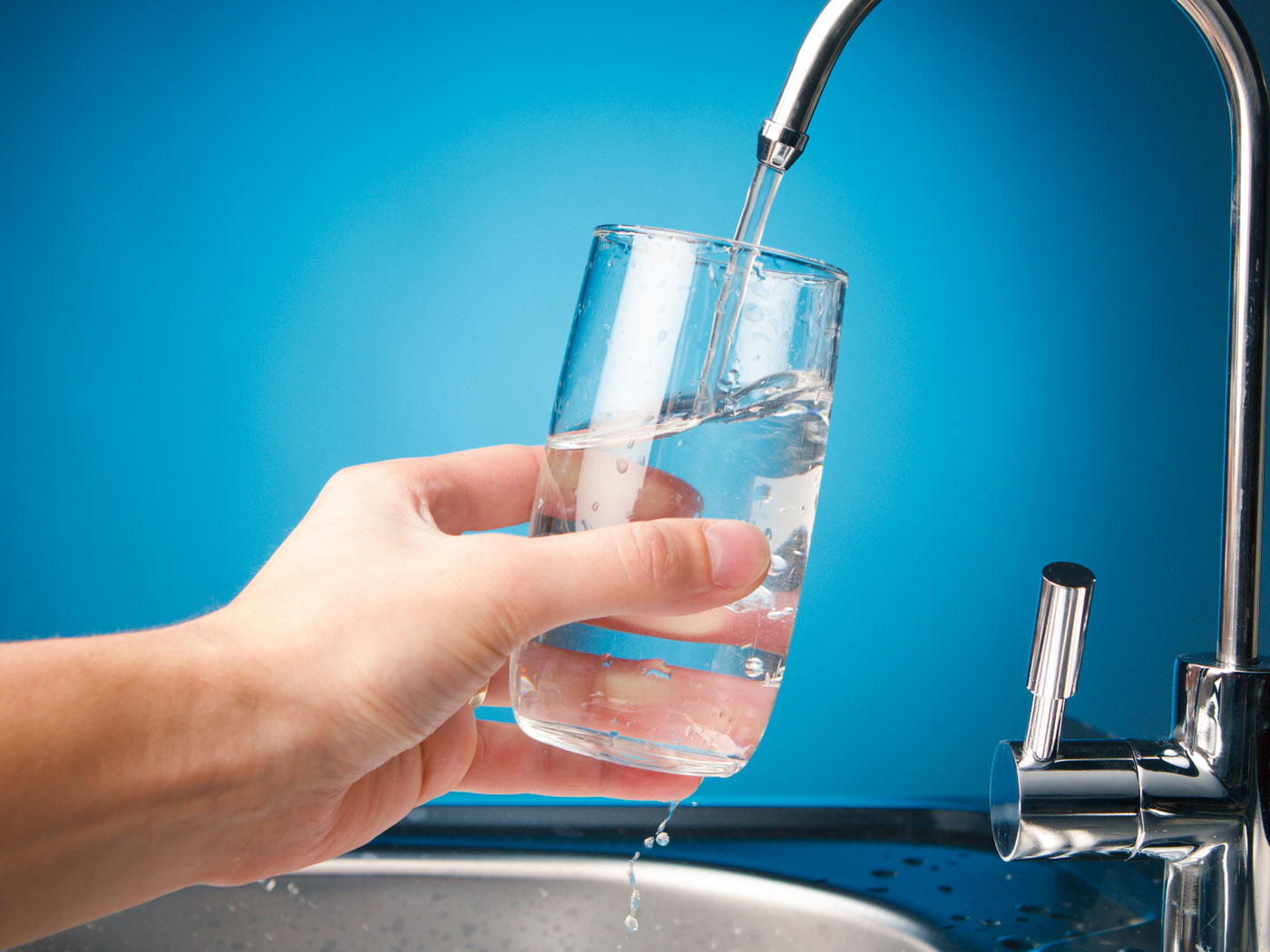Reverse osmosis, in conjunction with the carbon pre-filter in our system, will remove organic chemicals, chlorine and its by-products, pesticides, and herbicides, lead, sodium, as well as arsenic, asbestos, and all of the cancer-causing “radionuclides.”
Also, this system is the best technology available for the removal of chloramines, which many city water systems now use instead of chlorine. Reverse osmosis plus carbon is also the first choice for removal of the gasoline additive MTBE that’s becoming more prevalent in our water supplies.
RO provides a full-range treatment that assures safe, great-tasting water at a very reasonable price. It’s a proven performer that with minimal upkeep will provide a lifetime supply of pure and delicious drinking water. It’s our choice as the best all-around drinking water provider.
What is reverse osmosis water?
Reverse osmosis (RO) is a water purification technology that uses a semipermeable membrane. This membrane technology is not properly a filtration method. In reverse osmosis, an applied pressure is used to overcome osmotic pressure, a colligative property, that is driven by chemical potential, a thermodynamic parameter.
 How does it work?
How does it work?
Water, driven by normal city water pressure, flows first through a carbon pre-filter, which removes organic contaminants including chlorine and its by-products.
Next, it enters the reverse osmosis membrane, a very tight, sheet-like filter, that allows water to pass but rejects dissolved solids like sodium and impurities like lead and arsenic. Some of the water entering the unit is used to cleanse the membrane surface and flows to the the kitchen drain pipes.
The purified water is stored in a small storage tank until it is needed. When the ledge faucet mounted on the sink is opened, the purified water is forced by air pressure through another carbon filter, which gives it a final polish and from there to the ledge faucet.
(This is a simplified description of a three-stage RO unit. Additional stages like sediment filters and additional carbon filters can be included. The simplified description omits a few very essential parts like flow control devices, check valves, and an automatic shutoff devices that stops the inflow of water when the storage tank is full.)
Is a reverse osmosis unit like a distiller?
Both effectively reduce “dissolved solids” content of water, but the processes are quite different.
RO filters water through a very tight semi-permeable membrane. A distiller is like a big tea kettle: it boils water, catches the steam, condenses it, and captures the resulting water. Most impurities are left behind in the boiling chamber.
Both distillers and reverse osmosis systems rely heavily on carbon filtration for chemical removal. (Cheap distillers often have little or no carbon filtration and are, therefore, of limited effectiveness.)
But isn’t distilled water purer than reverse osmosis water?
Distillers typically remove a few parts per million more of common mineral constituents like sodium.
However, distillers don’t do a good job with volatile chemicals with a low boiling point. Chloramines, for example, which many cities now use instead of chlorine as a disinfectant, aren’t removed well by distillers.
Reverse osmosis, with the carbon filters that accompany it, does a very good job with chloramines. Unless volatile chemicals like chlorine are removed by carbon filtration before they enter the distiller, they will be released into the room air or they will end up in the distilled water.
But in general, distilled water is very pure, as is reverse osmosis water.
Does reverse osmosis waste water?
It depends on what you mean by waste.
A home RO unit uses water to clean itself and wash away impurities. It’s like a lot of other water-using appliances. We use water to wash clothes, to wash dishes, to wash cars, to flush toilets.
A reverse osmosis unit uses more water in its operation than you actually consume, but it doesn’t use enough that you’ll notice it on your water bill. It uses water only while it’s filling its storage tank. When the tank is full, the whole unit shuts down and no water runs to drain.
In terms of expense, it’s like a couple or three extra toilet flushes a day.
Can I hook the reverse osmosis unit to my refrigerator/icemaker?
Yes, if you can reach it with a ¼” tube from the undersink RO unit. We’ll provide everything you need without cost if you’ll let us know you need it.
Pressure is a consideration with some refrigerators, so it’s a good idea to check with the manufacturer. The pressure you’ll get from the RO unit is about ⅔ of the incoming line pressure.
How long will a reverse osmosis unit last?
Virtually forever if you service it regularly and replace parts that wear out, like the storage tank and the ledge faucet.
Typical membrane life is about 3 to 5 years, depending on the nature of the water that it’s processing.
Is it true that reverse osmosis doesn’t remove chlorine?
It is true that the reverse osmosis membrane doesn’t remove chlorine. It doesn’t have to, because it has a couple of high quality carbon filters with it that do the job. In fact, if the first carbon filter didn’t remove all the chlorine, the membrane would get eaten alive in no time.
Do reverse osmosis units need electricity?
No, they run on water pressure. You need electricity only if you add an electric pressure-boost pump or an ultraviolet lamp. Standard units have neither and normally don’t need them.


